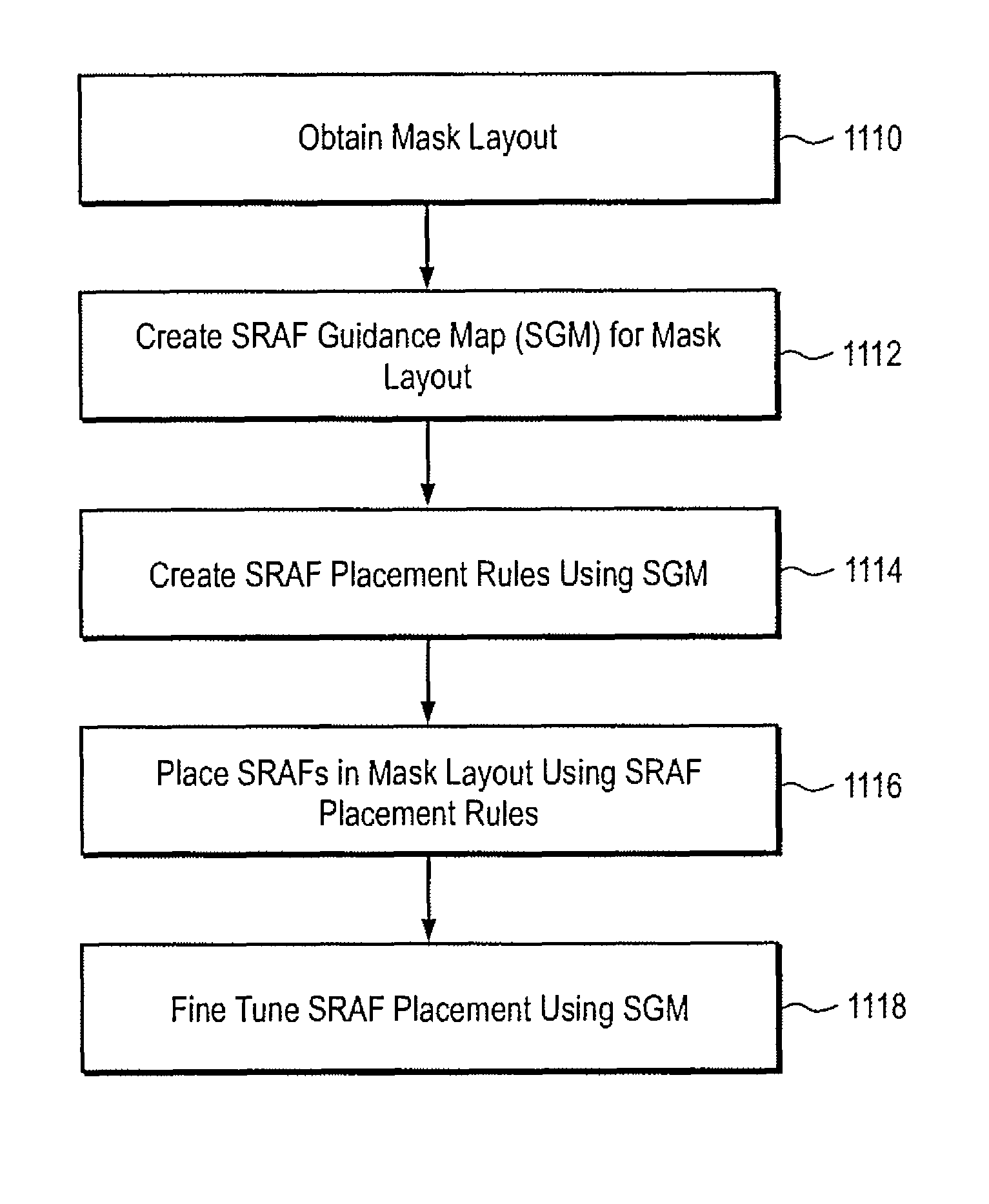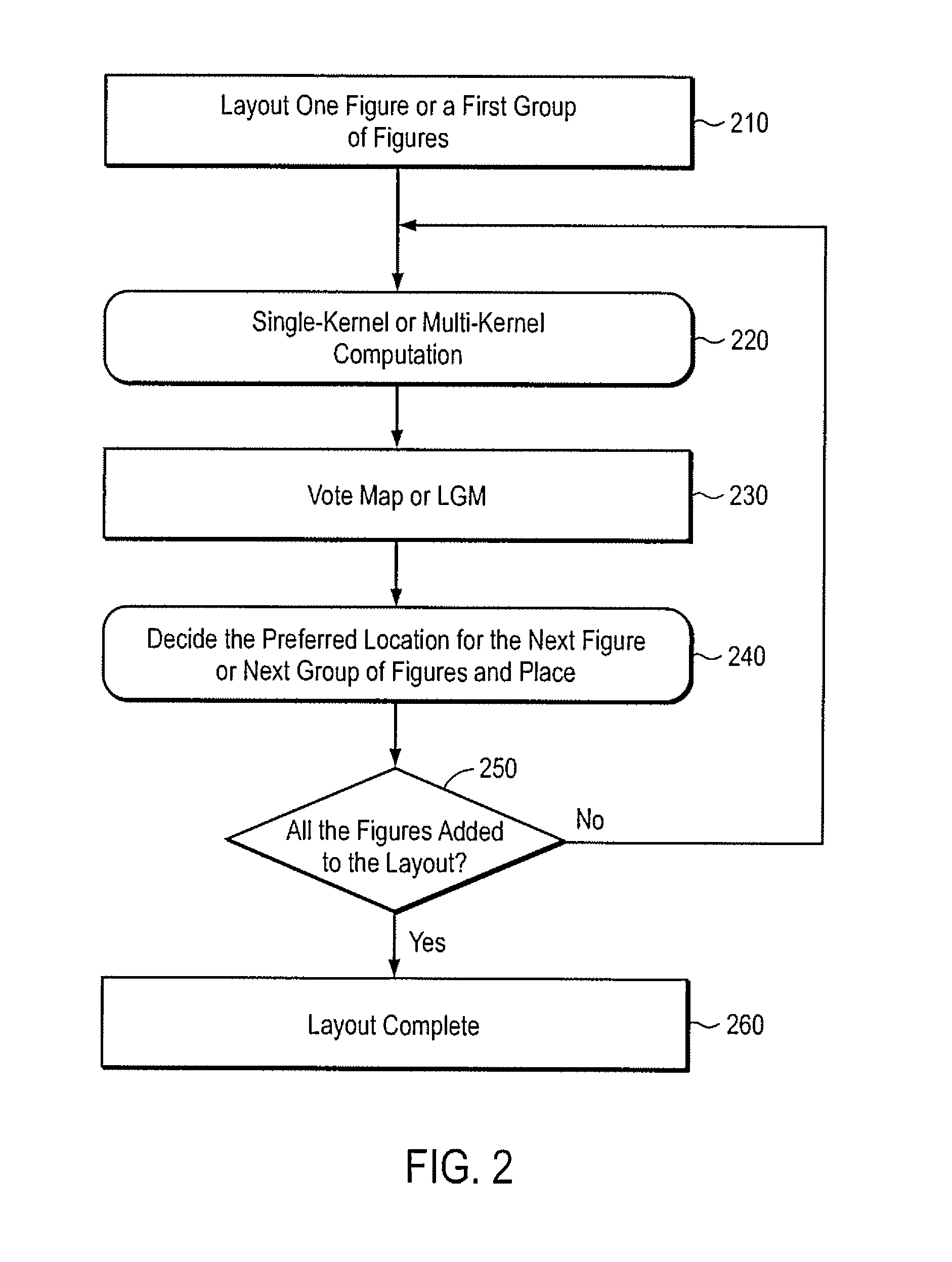Methods for performing model-based lithography guided layout design
- Summary
- Abstract
- Description
- Claims
- Application Information
AI Technical Summary
Benefits of technology
Problems solved by technology
Method used
Image
Examples
Embodiment Construction
[0043]FIG. 2 is an exemplary flowchart illustrating an exemplary process of the LGL process of the present invention. In the first step of the process (Step 210), utilizing the target design, one or more of the features included in the target design are placed in a mask pattern in accordance with their corresponding positions in the target pattern. It is noted that the number of features from the target pattern to be added to the mask pattern each iteration can be determined, for example, by the operator, or may be defined as some fixed number, or may be governed by the process being utilized and the number of features deemed critical in the target design. In another variation, it is possible to add only a single feature per iteration.
[0044]At step 220, a simulation of the illumination of the current mask pattern for a given lithography process (i.e., the process to be utilized to illuminate the target pattern) is performed so as to produce an aerial image (or equivalent thereof) wh...
PUM
 Login to View More
Login to View More Abstract
Description
Claims
Application Information
 Login to View More
Login to View More - R&D
- Intellectual Property
- Life Sciences
- Materials
- Tech Scout
- Unparalleled Data Quality
- Higher Quality Content
- 60% Fewer Hallucinations
Browse by: Latest US Patents, China's latest patents, Technical Efficacy Thesaurus, Application Domain, Technology Topic, Popular Technical Reports.
© 2025 PatSnap. All rights reserved.Legal|Privacy policy|Modern Slavery Act Transparency Statement|Sitemap|About US| Contact US: help@patsnap.com



